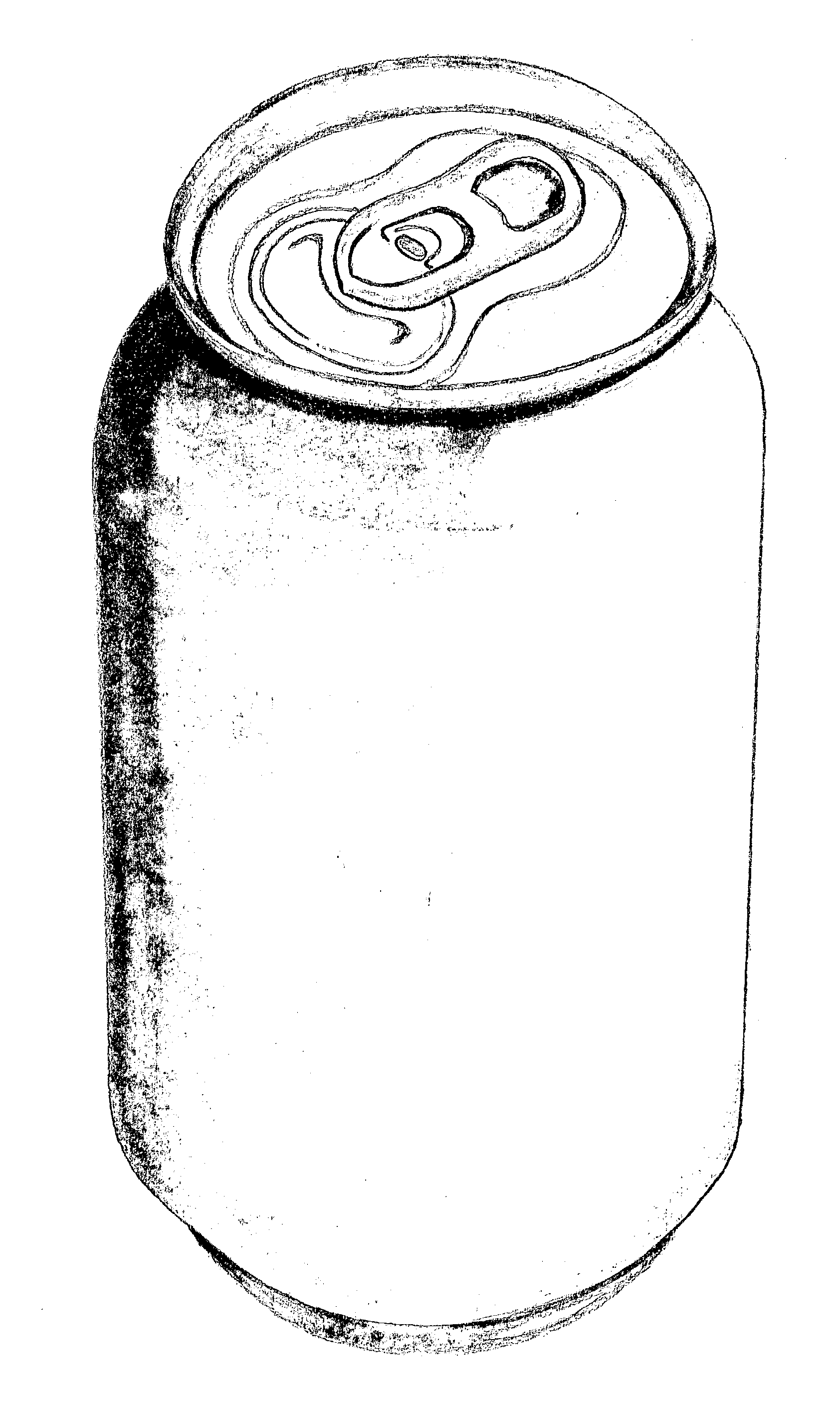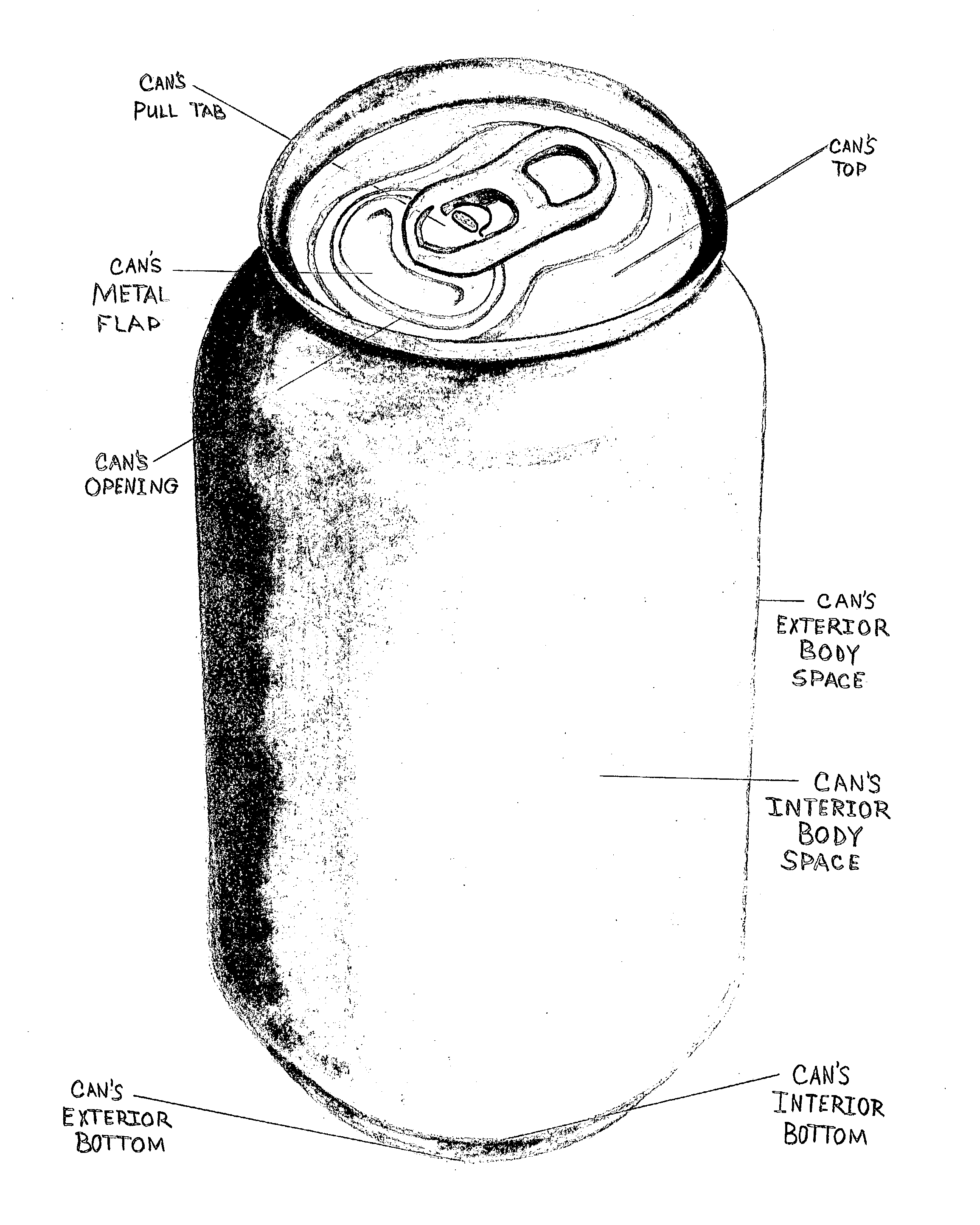Split can for beverages
a beverage and canister technology, applied in the field of beverage industry, can solve the problems of high equipment requirements, precipitation of salts and foul taste, and not strength, and the early researchers were confronted with the problem of can liner,
- Summary
- Abstract
- Description
- Claims
- Application Information
AI Technical Summary
Problems solved by technology
Method used
Image
Examples
Embodiment Construction
[0084] In observation of FIGS. 1 and 1A, a closed "12 ounce (oz.) beverage can" and its components are indicated by numbering from 1 through 9. The can's top is 1(circumference: 7.0 inches, vertical diameter: 2.0 inches, horizontal diameter: 2.0 inches), the can's pull tab is 2 (length; 1.0 inches, vertical diameter: 1.0 inches, horizontal diameter: 0.50 inches), the can's metal insertion is 3(circumference: 2.75 inches, vertical diameter: 0.75 inches, horizontal diameter: 1.0 inches), the can's opening is 4 (circumference: 2.5 inches, vertical diameter: 0.75 inches, horizontal diameter 0.77 inches), the can's exterior body space is 5 (circumference: 8.5 inches, vertical diameter: 2.5 inches, height: 4.75 inches), the can's interior body space is 6 (vertical diameter: 2.0 inches, height: 4.0 inches, volume: 355 ml, weight: 12 oz. with product, radius: 0.25 inches to 5.25 inches, ratio: 3.4 inches), the can's interior bottom is 7 (circumference: 5.5 inches, diameter: 1.5 inches), the...
PUM
 Login to View More
Login to View More Abstract
Description
Claims
Application Information
 Login to View More
Login to View More - R&D
- Intellectual Property
- Life Sciences
- Materials
- Tech Scout
- Unparalleled Data Quality
- Higher Quality Content
- 60% Fewer Hallucinations
Browse by: Latest US Patents, China's latest patents, Technical Efficacy Thesaurus, Application Domain, Technology Topic, Popular Technical Reports.
© 2025 PatSnap. All rights reserved.Legal|Privacy policy|Modern Slavery Act Transparency Statement|Sitemap|About US| Contact US: help@patsnap.com



